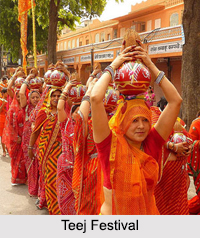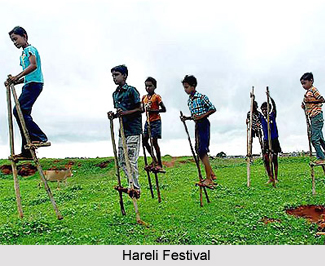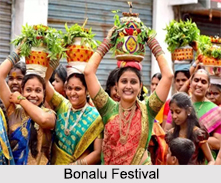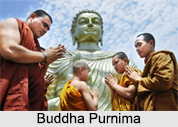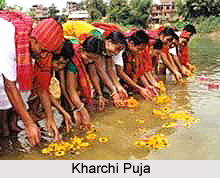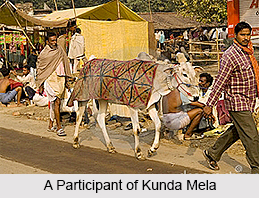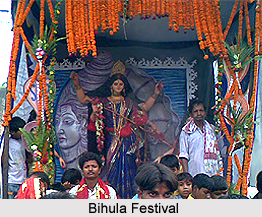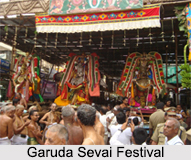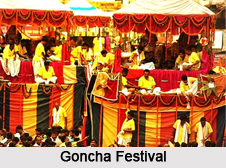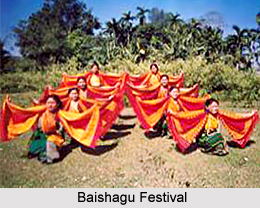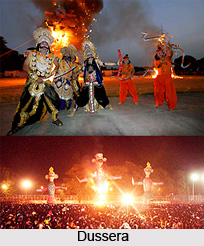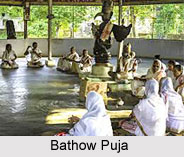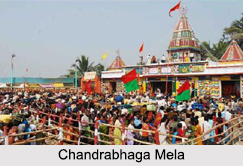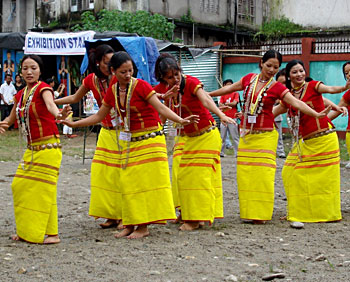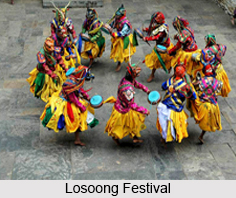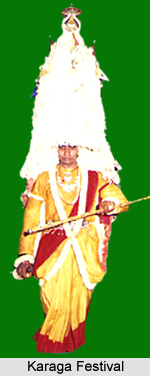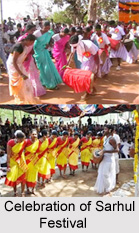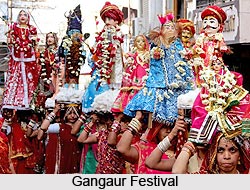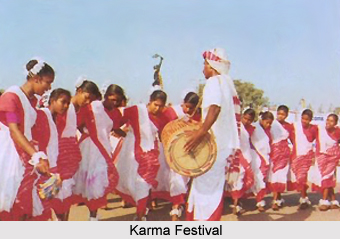Introduction
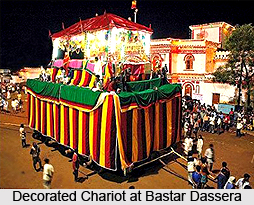 Bastar Dussehra is the most important festival of the Bastar district, situated in the Indian state Chhattisgarh. It is the grand celebration of Dassera festival, in the month of October-November, where various tribes partake in the event. The Amavasya of the month of Shravan marks the beginning of the festival which continues for 75 days and ends on the thirteenth day of the bright moon in the month of Ashwin. Specific rituals are observed on specific days of Bastar Dussehra. The celebration in this region is quite distinct from the celebrations of Dussehra in other parts of the country owing to its unique rituals and beliefs.
Bastar Dussehra is the most important festival of the Bastar district, situated in the Indian state Chhattisgarh. It is the grand celebration of Dassera festival, in the month of October-November, where various tribes partake in the event. The Amavasya of the month of Shravan marks the beginning of the festival which continues for 75 days and ends on the thirteenth day of the bright moon in the month of Ashwin. Specific rituals are observed on specific days of Bastar Dussehra. The celebration in this region is quite distinct from the celebrations of Dussehra in other parts of the country owing to its unique rituals and beliefs.
Mythology of Bastar Dussehra
In Bastar Dassera the tribal people do not rejoice the victorious return of Lord Rama after 14 years of exile to Ayodhya. Instead Bastar Dussehra is the congregation of Devi Maoli and all her sisters. Devi Maoli is regarded as native deity of Bastar and is worshipped as the elder sister of Devi Danteshwari, who is the family goddess of the ruling Kakatiya family. Flower-bedecked local deities are brought by numerous priests in a ceremonious way to the Danteshwari temple situated in Jagdalpur.
Rituals of Bastar Dussehra
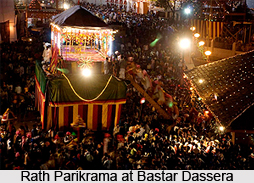 Bastar Dussehra is a unique festival of Bastar district, Chhattisgarh, which spans for 75 days. Unlike the celebrations in other regions of the country, this longest Dassera of the world has no association with Ramayana and is celebrated in the honour of Sri Danteshwari Mai. In the festival active participation of a huge crowd can be witnessed irrespective of caste and religions. Specific rituals are carried out in specific days where great enthusiasm and vigour can be experienced on the part of people, which make these events even more vivacious. Bastar Dussehra starts from Amavasya in the month of Shravan and ends on the thirteenth day of the bright moon in the month of Ashwin.
Bastar Dussehra is a unique festival of Bastar district, Chhattisgarh, which spans for 75 days. Unlike the celebrations in other regions of the country, this longest Dassera of the world has no association with Ramayana and is celebrated in the honour of Sri Danteshwari Mai. In the festival active participation of a huge crowd can be witnessed irrespective of caste and religions. Specific rituals are carried out in specific days where great enthusiasm and vigour can be experienced on the part of people, which make these events even more vivacious. Bastar Dussehra starts from Amavasya in the month of Shravan and ends on the thirteenth day of the bright moon in the month of Ashwin.
Pata Jatra
Pata Jatra is characterized by the worship of wood which is regarded as holy by the tribals. This ritual is carried out before felling of the timbre for crafting the chariot. On Shravan Amawasya, also referred as Hareli Amawasya, a log of wood is placed at the Loin Gate (Simha Dwar) of the Palace temple, at Jagdalpur, and is sanctified with sacrificial blood. This marks the beginning of the festival.
Deri Gadhai
Deri Gadhai is the posting of pillars. It is observed on the twelfth day of the bright moon in the month of Bhadon in which two pillars are posted in the Sirasar. Sirasar is the traditional town hall located outside the palace and serves as the hub of Bastar Dussehra activities.
Kachan Gaadi
Kachan Gaadi is also known as the throne for Kachan Devi. It is celebrated on the Ashwin Amaswasya when a young girl belonging to Mirgin-Mahara caste (a Scheduled Caste) is believed to become a medium for being possessed by the caste deity known as Kachan Devi. The possessed girl swings on a bed of thorns brandishing a sword. The king comes to the girl in a procession for seeking her blessings and the girl grants him a flower that symbolizes her sanction for proceeding with the festival.
Kalash Sthapana
Kalash Sthapana is the installation of the urns. It is observed on the first day of the bright moon in the month of Ashwin marking the beginning of the Navaratri part of Bastar Dassera. During this event the sacred urns are installed in the temples of Maoli, Kankalin Devi and Danteshwari in Jagdalpur. Holy recitations are started by the Brahmins that continue for nine days.
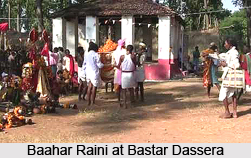 Jogi Bithai
Jogi Bithai
Jogi Bithai is the Jogi`s penance which is observed on the first day of the bright moon in the month of Ashwin. In the evening a Jogi belonging to Halba tribe sits in a pit while buried shoulder deep and does penance to make the festival successful. Prior to this vigil, sacrifice of a goat and seven mangur fishes is carried out.
Rath Parikrama
Rath Parikrama is known as the chariot circuit and is observed on the day after the commencement of penance by the Jogi. During this event a 4 wheeled flower chariot is, also known as phool-rath, starts to circumambulate the Maoli temple every evening. This ritual continues till the seventh day. Previously a single chariot consisting of 12 wheels were circumambulated but owing to its heaviness it was later replaced by two smaller chariots. One of them has 4 wheels and circumambulate every day whereas the other one has 8 wheels is used for a long journey on the tenth and eleventh days. The small chariot is rested on eighth and ninth days.
Nisha Jatra
Nisha Jatra is the nocturnal festival and is celebrated on the eighth day of the bright moon in the month of Ashwin. It is also popular as Durgashtami. During this, a procession of lights reaches to the puja mandap located in the Sunday Square or Itwari.
Jogi Uthai
Jogi Uthai is the raising of the Jogi which is carried out on the ninth day of the bright moon in the month of Ashwin when the penance of the Jogi ends. In this event he is raised from the pit in a ceremonious way and is honoured with sacred gifts.
Maoli Parghav
Maoli Parghav is also referred as the reception of the Devi Maoli who is the pre-Kakatiya presiding deity of Bastar and is regarded as the elder sister of Danteshwari. She is the chief guest during the congregation of deities. The deity arrives from Dantewada in the doli or palanquin of Danteshwari which is carried on the shoulders of four media swaying under her spell. After receiving her with great pomp and show she is taken to the palace-temple of Danteshwari.
Bheetar Raini
Bheetar Raini or the inner circuit is observed on the tenth day of the bright moon in the month of Ashwin. In the event the 8-wheeled chariot having a swing at the top tier for the king to sit circumambulates around the Maoli temple. However the seat is nowadays occupied by the Raj-Guru along with the holy umbrella of Devi Danteshwari. After completing the circuit, about 400 marias and murias take it to Kumdakot which is a Sal grove located about 2 kilometres from the southern bank of Indravati River.
Baahar Raini
Baahar Raini or the outer circuit is observed on the eleventh day of the bright moon in the month of Ashwin when the king visits Kumdakot for offering rice cooked from the new harvest to the goddess. Subsequently the chariot is pulled back in a ceremonious manner along the main road to the Lion Gate of the palace.
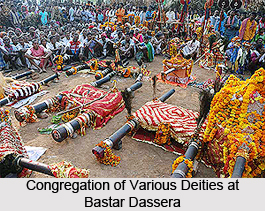 Kachan Jatra
Kachan Jatra
Kachan Jatra is the thanksgiving ceremony of Bastar Dussehra which is held on the twelfth day of the bright moon in the month of Ashwin. The event celebrates the successful conclusion of the festival.
Muria Durbar
Muria Durbar is the conference of tribal chieftains and is celebrated on the day of thanksgiving ceremony only. In this event the tribal chieftains discuss with the administrative officers and elected representatives about the matters of public welfare. Previously the event was presided by the king.
Ohadi
Ohadi is bidding farewell to the deities and is observed on the thirteenth day of the bright moon in the month of Ashwin. On this day the deities which are brought from different parts of Bastar are bade farewell ceremoniously. Maoli Devi who arrives from Dantewada is also bade farewell along with new clothes and ornaments with which the idol of the deity is adorned.
Involvement of Different Tribes in Bastar Dussehra
People belonging to varied castes and tribes participate in the festival and each community is assigned a specific task which specific communities have been performing since decades. Mundas hailing from Potanar village cherish the privilege of singing hymns at all the rituals of Bastar Dassera.
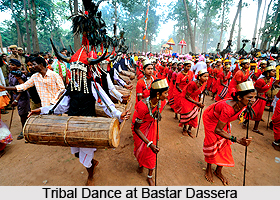 Carpenters arrive from Beda Umargaon village for making the two-tiered chariot. Tribals of Sonabal, Kesarpal and Karanji villages are given the task of making special massive ropes. Youth of Agarwara Pargana and Kachorapati pulls the small chariot while the large chariot is pulled by the marias of Killepal.
Carpenters arrive from Beda Umargaon village for making the two-tiered chariot. Tribals of Sonabal, Kesarpal and Karanji villages are given the task of making special massive ropes. Youth of Agarwara Pargana and Kachorapati pulls the small chariot while the large chariot is pulled by the marias of Killepal.
Features of Bastar Dussehra
The inception of Bastar Dussehra is believed to have enrooted in 15th century by the fourth Kakatiya ruler, Maharaj Purushottam Deo. During the event the king, being the high-priest of Devi Danteshwari, temporarily abandons office for devoting himself to the worship of Danteshwari for 10 days. It is believed that through a medium possessed by the Devi, he seeks a report of the state during this festival. Although the festival has Hindu roots as the ruling family follow Hinduism, a number of tribal elements have been incorporated in the rituals making the festival an exquisite blend of tribal and Hindu traditions which also reflects in the local culture.
Specialities of Bastar Dussehra
There are certain features of Bastar Dussehra which have made the festival unique among the plethora of Indian festivals. Bastar is located in Dandakarnya, the place where Lord Rama is said to have spent his 14 years of exile. In spite of this, the festival has no association with Lord Rama or Ramayana. Spanning for 75 days, it is considered to be the longest Dassera of the world. Some of the rituals of the festival require extraordinary rigor like dancing jarringly on the roads, a young Jogi buried shoulder-deep in a vigil for 9 days, mediums possessed by local deities and a girl swinging on a bed of thorns. A forum is also provided for the tribal chieftains, administrators and elected representatives for making grants. Rath Yatra is one of the most celebrated events of Bastar Dussehra in which a huge chariot is pulled by 400 marias. The chariot looks primitive but it is in fact symbolic of the tribal King`s patronage to the local craft and represents the tribal beliefs of restraining the use of sophisticated tools to craft fancy chariots. The chariot is made fresh every year.
